![]()
![]()
![]()
Use LEFT and RIGHT arrow keys to navigate between flashcards;
Use UP and DOWN arrow keys to flip the card;
H to show hint;
A reads text to speech;
52 Cards in this Set
- Front
- Back
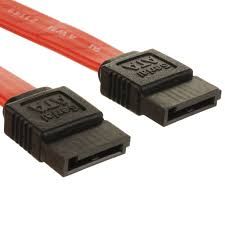
1) What type of plug is this? 2) What is it used for? |
1) Serial ATA (SATA) 2) Data Transfer (hard drive to motherboard) |
|
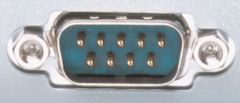
1) What type of plug is this? 2) What is it used for? |
1) Serial plug 2) Modems and other periphereals |
|
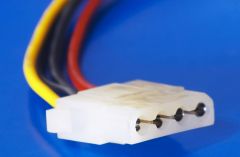
1) What type of plug is this? 2) What is it used for? |
1) Molex 2) Power to motherboard / other interior components |
|

|
1) ATX 24 pin power 2) Main power to the motherboard. |
|
|
1) Name 4 sizes of motherboards from largest to smallest. 2) What are some considerations to have when selecting a motherboard size? |
1) AT, ATX, Micro-ATX, Mini-ATX, Mini- ITX, Nano ITX, Pico-ITX, Mobile-ITX 2) Compatible case and power supply. How much physical you have available. The air flow needed to properly cool the computer. |
|
|
1) Describe a PGA CPU and socket.
2) Describe a LGA CPU and socket. |
1) Pin grid arry. (pins on the CPU
2) Land grid array. (Lands on the CPU) |
|

1) Slot type. 2) General use. |
1) AGP 2) Older video adapters |
|
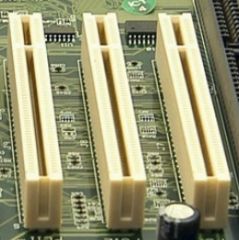
1) Slot type. 2) General use. |
1) PCI 2) Expansion cards - |
|

1) Slot type. 2) General use. |
1) PCIe 2) Expansion cards - Video adapters |
|
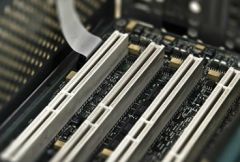
1) Slot type. 2) General use. |
1) PCIx 2) Expansion cards that need |
|
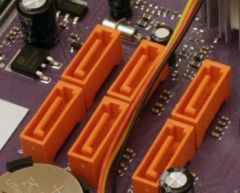
1) Port type. 2) General use. |
1) Serial ATA port. (SATA) 2) Hard drive. (data transfer) |
|
|
On a power supply what color wire is +12 volt?
|
yellow
|
|
|
On a power supply what color wire is +5 volt?
|
Red
|
|
|
On a power supply what color wire is +3.3 volt?
|
Orange
|
|
|
On a power supply what color wire is the ground?
|
Black
|
|
|
What does ROM stand for?
|
Read Only Memory
|
|
|
DRAM
|
Dynamic RAM is a memory chip that is used as main memory. DRAM must be constantly refreshed with pulses of electricity in order to maintain the data stored within the chip.
|
|
|
What does PROM stand for?
|
Programmable read only memory
|
|
|
What does EPROM stand for?
|
Erasable programmable read only memory
|
|
|
What does EEPROM stand for?
|
Electronically erasable programmable read only memory
|
|
|
DRAM
|
Dynamic RAM is a memory chip that is used as main memory. DRAM must be constantly refreshed with pulses of electricity in order to maintain the data stored within the chip.
|
|
|
SRAM
|
Static RAM is a memory chip that is used as cache memory. SRAM is much faster than DRAM and does not have to be refreshed as often. SRAM is much more expensive than DRAM.
|
|
|
SDRAM
|
Synchronous DRAM is DRAM that operates in synchronization with the memory bus. The memory bus is the data path between the CPU and the main memory. Control signals are used to coordinate the exchange of data between SDRAM and the CPU.
|
|
|
DDR SDRAM
|
Double Data Rate SDRAM is memory that transfers data twice as fast as SDRAM. DDR SDRAM increases performance by transferring data twice per clock cycle.
|
|
|
DDR2 SDRAM
|
Double Data Rate 2 SDRAM is a faster than DDR–SDRAM memory. DDR2 SDRAM improves performance over DDR SDRAM by decreasing noise and crosstalk between the signal wires.
|
|
|
DDR3 SDRAM
|
Double Data Rate 3 SDRAM expands memory bandwidth by doubling the clock rate of DDR2 SDRAM. DDR3 SDRAM consumes less power and generates less heat than DDR2 SDRAM.
|
|
|
PC100 SDRAM
Peak Transfer Rate: Front Side Bus: |
800 MB/s
100MHz |
|
|
PC133 SDRAM
Peak Transfer Rate: Front Side Bus: |
1060 MB/s
133 MHz |
|
|
DDR–333
Peak Transfer Rate: Front Side Bus: |
2700 MB/s
166 MHz |
|
|
DDR–400
Peak Transfer Rate: Front Side Bus: |
3200 MB/s
200 MHz |
|
|
DDR3–1600
Peak Transfer Rate: Front Side Bus: |
|
|
|
DDR2–800
Peak Transfer Rate: Front Side Bus: |
|
|
|
DDR3–1333
Peak Transfer Rate: Front Side Bus: |
|
|
|
DDR3–1866
Peak Transfer Rate: Front Side Bus: |
|
|
|
DDR3 –2133
Peak Transfer Rate: Front Side Bus: |
|
|
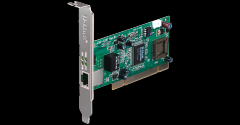
What is this?
|
A network interface card. (PCI slot) This would connect a pc to a modem with a Cat5 cable. |
|
|
What is the purpose of BIOS? |
Basic input output system. The bios is where you configure the boot instructions and hardware settings for your computer. Access before OS loads by pressing specific key combinations. |
|
|
What is the purpose of RAM? |
RAM or main memory is where currently operating programs are stored |
|
|
What is the purpose of CMOS? |
It holds the boot instructions to start the OS. Complementary metal oxide semiconductor. |
|
|
What is the purpose of the chipset? |
To control communications between different components in the computer. It is built into the motherboard. |
|
|
What does the unit of measurement RPM stand for? |
Revolutions per minute. Measurement is used primarily with hard disk drives. |
|
|
What does the unit of measurement ppm stand for? |
Page per minute - used to measure printer speed |
|
|
What does the unit of measurement gigabytes stand for? |
About 10 thousand bytes of data. Used to describe memory. |
|
|
Describe RAID 0.
|
Uses at least 2 hard drives. Data striping. No redundancy. High performance but no data loss prevention.
|
|
|
Describe RAID 1
|
Uses at least 2 hard drives. Creates a complete mirror on both hard drives of the same data. High data loss prevention because all data is duplicated.
|
|
|
Describe RAID 5
|
Uses at least 3 hard drives. Includes a combination of data striping with data mirroring including parity. If one hard drive fails the data on the others can re–create the lost data.
|
|
|
7 pin cable that connects to an external hard drive. |
eSata |
|
|
Can support up to 15 devices and must be terminated at the end of the chain.
|
|
|
|
6–pin mini–DIN connector for a keyboard or mouse.
|
|
|
|
Transmits 8 bits of data at one time and uses the IEEE 1284 standard. |
FireWire |
|
|
Uses either a DB–9 or DB–25 connector and transmits one bit of data at a time. |
Serial connector |
|
|
What activities does the Northbridge part of the chipset normally control? |
The faster of the 2 control centers. The north ridge controls communication between the RAM, the CPU and the PCIe slots. |

